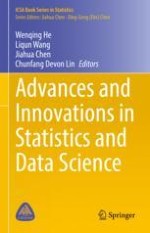2022 | OriginalPaper | Buchkapitel
Minimum Wasserstein Distance Estimator Under Finite Location-Scale Mixtures
verfasst von : Qiong Zhang, Jiahua Chen
Erschienen in: Advances and Innovations in Statistics and Data Science
Aktivieren Sie unsere intelligente Suche, um passende Fachinhalte oder Patente zu finden.
Wählen Sie Textabschnitte aus um mit Künstlicher Intelligenz passenden Patente zu finden. powered by
Markieren Sie Textabschnitte, um KI-gestützt weitere passende Inhalte zu finden. powered by
